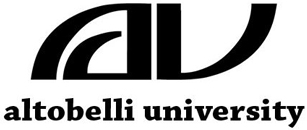Subd. 1a.Schedule.
(a) The schedule for fees and penalties is as provided in this subdivision.
(b) Three-year license fees are as follows:
(1) $195 initial practitioner, manager, or instructor license, divided as follows:
(i) $155 for each initial license; and
(ii) $40 for each initial license application fee;
(2) $115 renewal of practitioner license, divided as follows:
(i) $100 for each renewal license; and
(ii) $15 for each renewal application fee;
(3) $145 renewal of manager or instructor license, divided as follows:
(i) $130 for each renewal license; and
(ii) $15 for each renewal application fee;
(4) $350 initial salon license, divided as follows:
(i) $250 for each initial license; and
(ii) $100 for each initial license application fee;
(5) $225 renewal of salon license, divided as follows:
(i) $175 for each renewal; and
(ii) $50 for each renewal application fee;
(6) $4,000 initial school license, divided as follows:
(i) $3,000 for each initial license; and
(ii) $1,000 for each initial license application fee; and
(7) $2,500 renewal of school license, divided as follows:
(i) $2,000 for each renewal; and
(ii) $500 for each renewal application fee.
(c) Penalties may be assessed in amounts up to the following:
(1) reinspection fee, $150;
(2) manager and owner with expired practitioner found on inspection, $150 each;
(3) expired practitioner or instructor found on inspection, $200;
(4) expired salon found on inspection, $500;
(5) expired school found on inspection, $1,000;
(6) failure to display current license, $100;
(7) failure to dispose of single-use equipment, implements, or materials as provided under section 155A.355, subdivision 1, $500;
(8) use of prohibited razor-type callus shavers, rasps, or graters under section 155A.355, subdivision 2, $500;
(9) performing nail or cosmetology services in esthetician salon, or performing esthetician or cosmetology services in a nail salon, $500;
(10) owner and manager allowing an operator to work as an independent contractor, $200;
(11) operator working as an independent contractor, $100;
(12) refusal or failure to cooperate with an inspection, $500;
(13) practitioner late renewal fee, $45; and
(14) salon or school late renewal fee, $50.
(d) Administrative fees are as follows:
(1) homebound service permit, $50 three-year fee;
(2) name change, $20;
(3) certification of licensure, $30 each;
(4) duplicate license, $20;
(5) special event permit, $75 per year;
(6) registration of hair braiders, $20 per year;
(7) $100 for each temporary military license for a cosmetologist, nail technician, esthetician, or advanced practice esthetician one-year fee;
(8) expedited initial individual license, $150;
(9) expedited initial salon license, $300;
(10) instructor continuing education provider approval, $150 each year; and
(11) practitioner continuing education provider approval, $150 each year.
